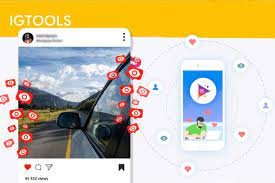Things to know about igtools .story views

Are igtools .story views you looking to boost your Instagram stories and get more views? Look no further than igtools! This powerful tool allows you to increase visibility on your stories, giving you the chance to reach a wider audience and ultimately grow your following. But before diving in, there are a few things to know about using igtools .story views effectively. In this blog post, we’ll explore everything from how it works to tips for maximizing its potential. So let’s get started and take your Instagram game to the next level!
What is igtools .story views?
Igtools .story views is a powerful tool that enables you to create and manage storylines in your app. It makes it easy to create scenes, add characters, and set up dialogue. igtools .story views also provides several tools for debugging and troubleshooting your storylines.
There are two ways to use igtools .story views: You can use it to create standalone stories or you can use it to integrate stories into your app’s existing user interface.
To create a standalone story, start by creating a new igtool .story view project. The project window looks like this:
You will need a few things before you begin: A storyboard file (.storyboard) with your Storyboard class defined
A character sheet (.xcf) file with the character’s data
An environment file (.env) with the environment data
A text file (.txt) with the storyline text
In the Project pane, find and select the storyboard file that you created in Step 1. In the editor area, select the Main View Controller scene. In the Attributes Inspector, change the Title of the View Controller to Storyboard Scene Title. Next, drag and drop an instance of your character sheet from the Characters folder into the view controller’s scene. Now click on the Character Sheet button in Igtools .view editor toolbar (below Scene 1 in Figure 1).
Storyline Toolbar
How igtools .story views work
Igtools .story views work a little differently than igtools .dashboard views. You create a view in igtools .story by selecting “Create New View” from the Views menu in the main toolbar and filling out the form.
The first thing you’ll want to do is select the data you want to view. In our example, we’re going to view all of the stories on our website. To do this, we click on the “Select Data” button at the top of the form and select “All Stories.”
Once you’ve selected your data, you’ll need to decide what type of view you want to create. There are three types of views in igtools .story: dashboard, list, and timeline.
Dashboard views are basically just glorified lists. They display your data in a table format with columns for each column of your data. You can hide or show any column by clicking on it’s heading and selecting one of the options from the popup menu. By default, all columns are displayed.
List views are similar to dashboard views, but they allow you to sort your data by any column that is displayed. You can also filter your data by selecting one or more column headings and clicking on the “Filter” button at the top of the form.
Timeline views are probably the most interesting type of view because they allow you to see your data as it changes over time. Each row in a timeline view
What is the difference between igtools .story views and regular views?
Igtools story views are designed for displaying large chunks of data in a visual way. This is great when you have a lot of data to show, or you want to create a quick visual overview of something.
Regular views, on the other hand, are designed for browsing through smaller sets of data. They’re ideal if you want to see a specific piece of information, or if you want to look at the data one element at a time.
How to use igtools .story views
1. You can use igtools .story views to explore data sets and visualize relationships between objects.
2. igtools .story views are useful for exploring large data sets and understanding how they are related.
3. igtools .story views have a tree-like structure, which makes them easy to navigate.
4. You can filter the data set by using the filters at the top of the view.
5. You can export the data set as a JSON or XML file.
Conclusion
If you’re looking to increase the views on your igtools .story page, there are a few things you should keep in mind. First and foremost, make sure your content is high-quality. This means writing engaging, well-researched stories that appeal to a wide audience. Be sure to use catchy headlines and images that draw people in. Additionally, make use of social media platforms to share your story with an even wider audience. Use hashtags (#igtools), post links to other igtools resources on your page, and start conversations about the topic at hand. By doing all of these things, you can guarantee that more people will see and read your story!




